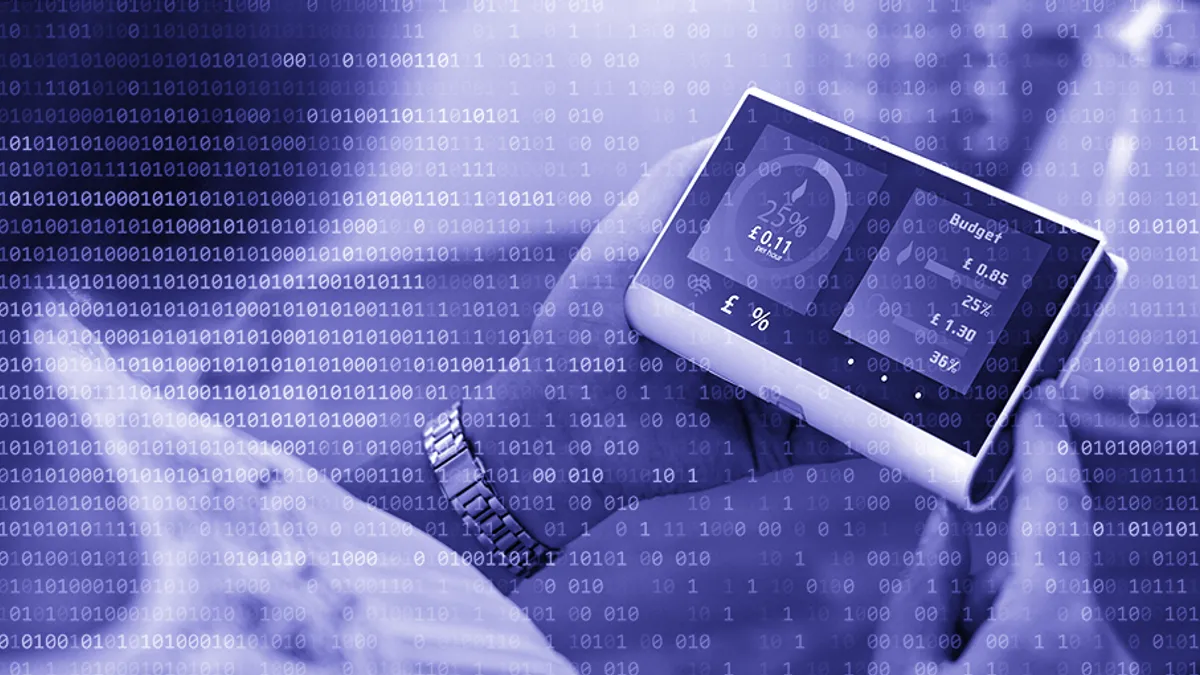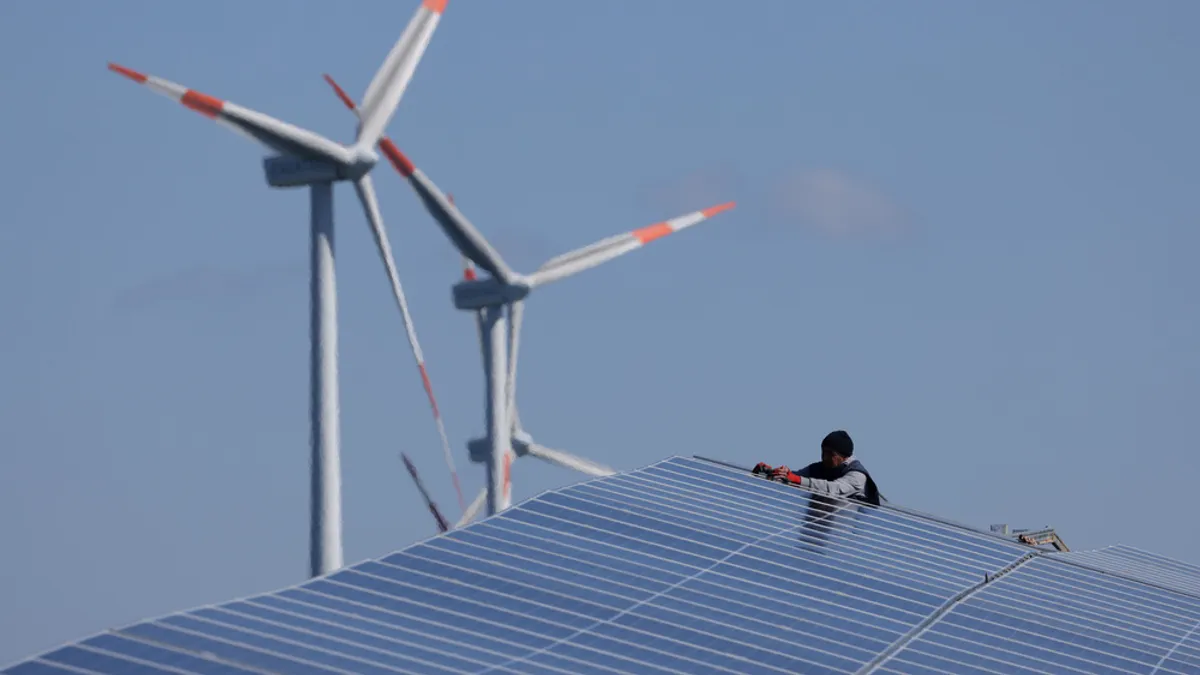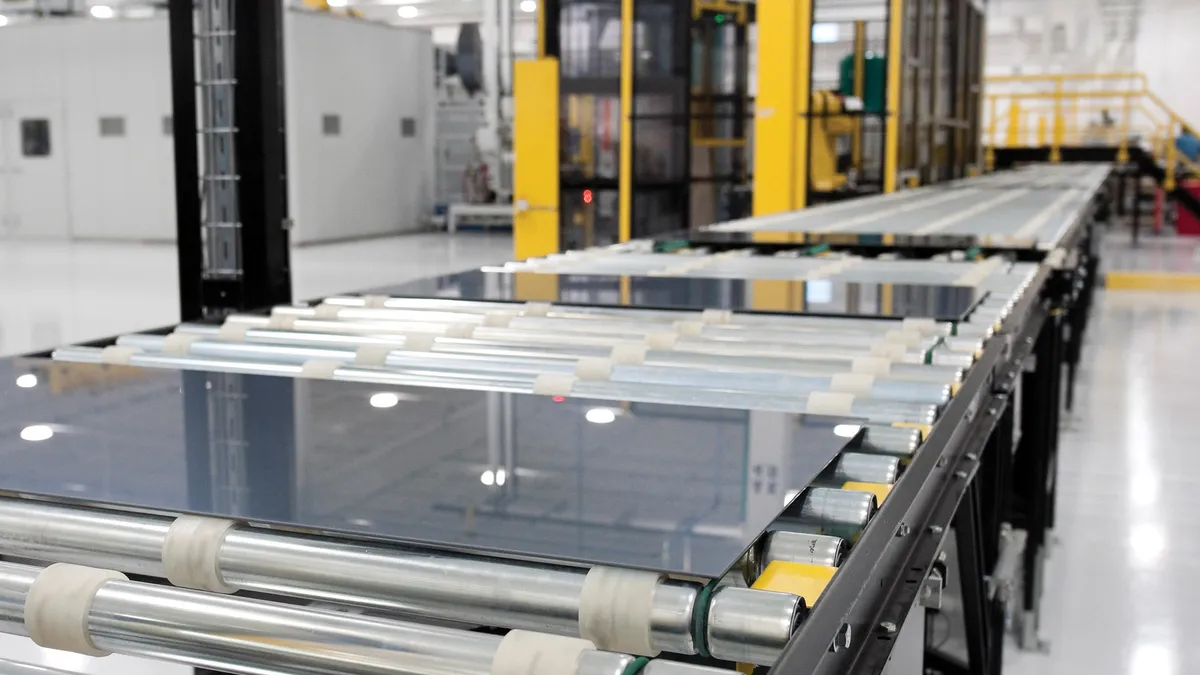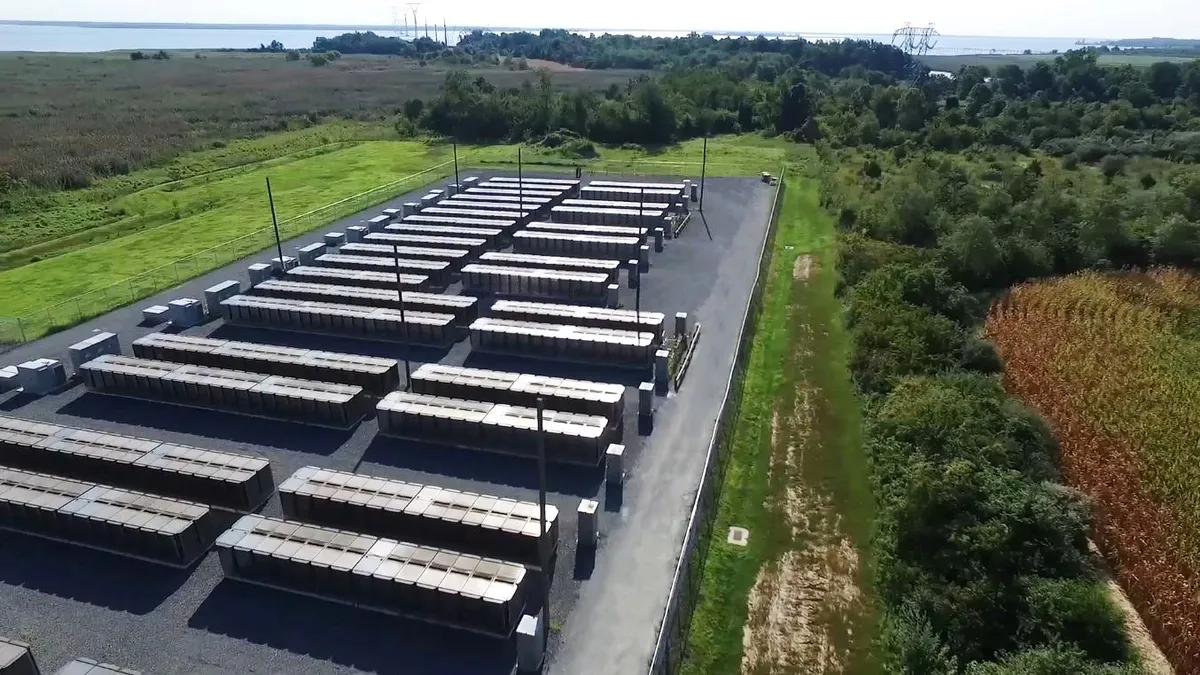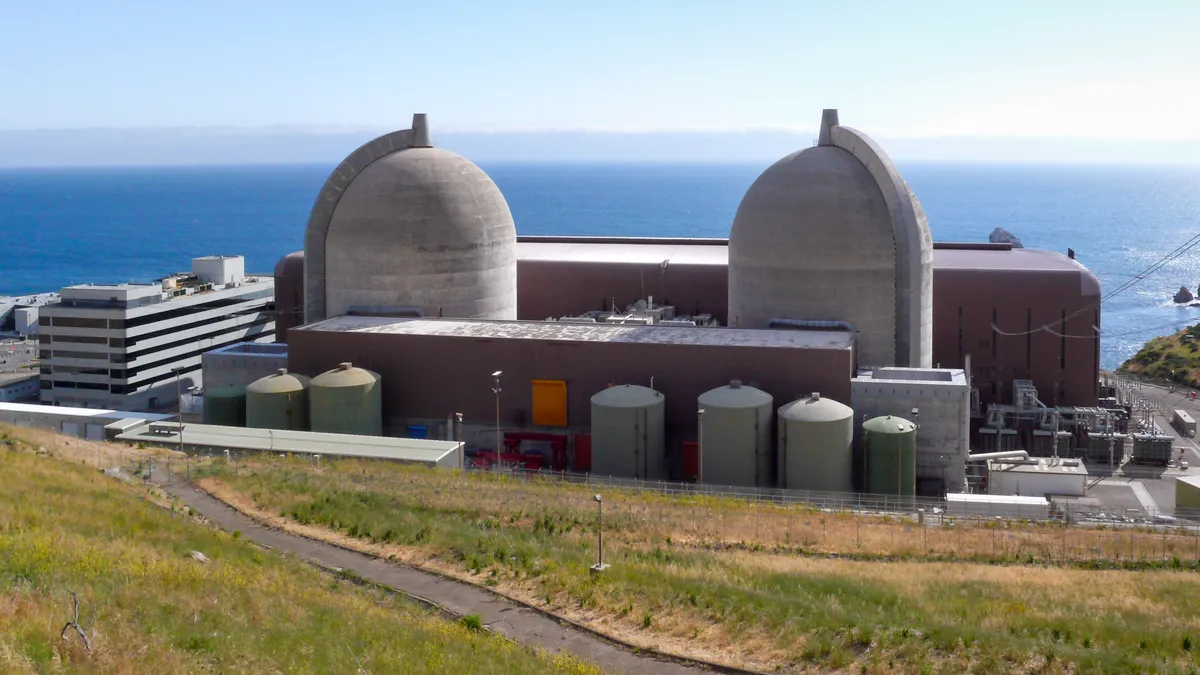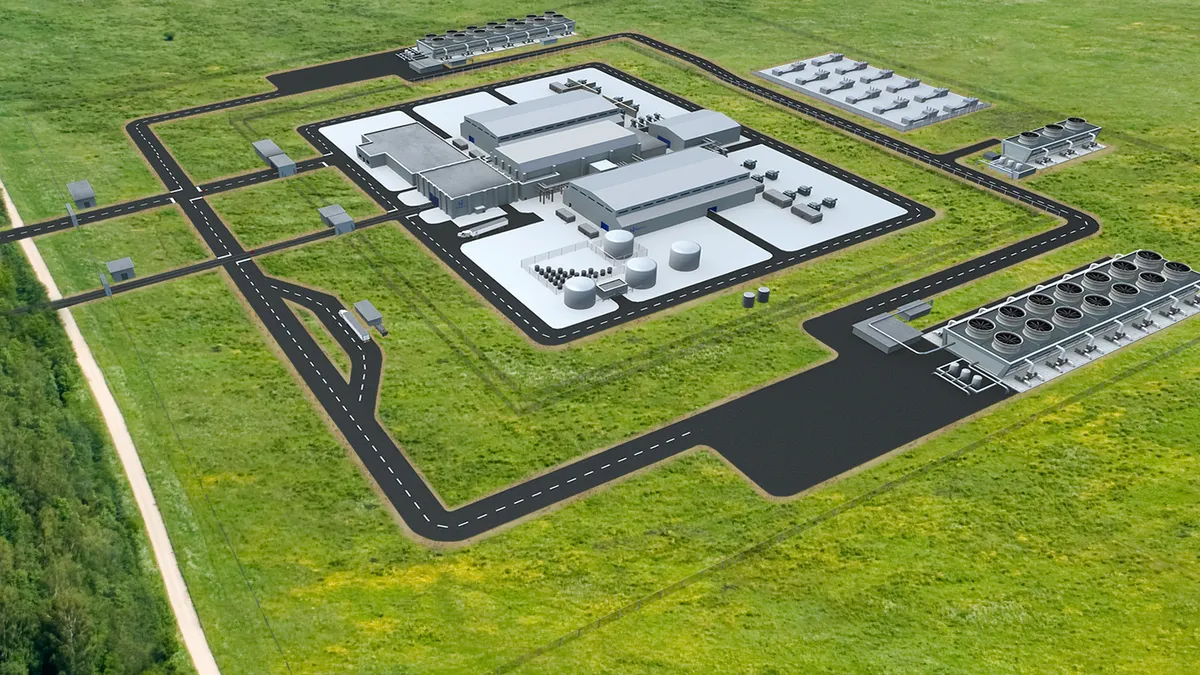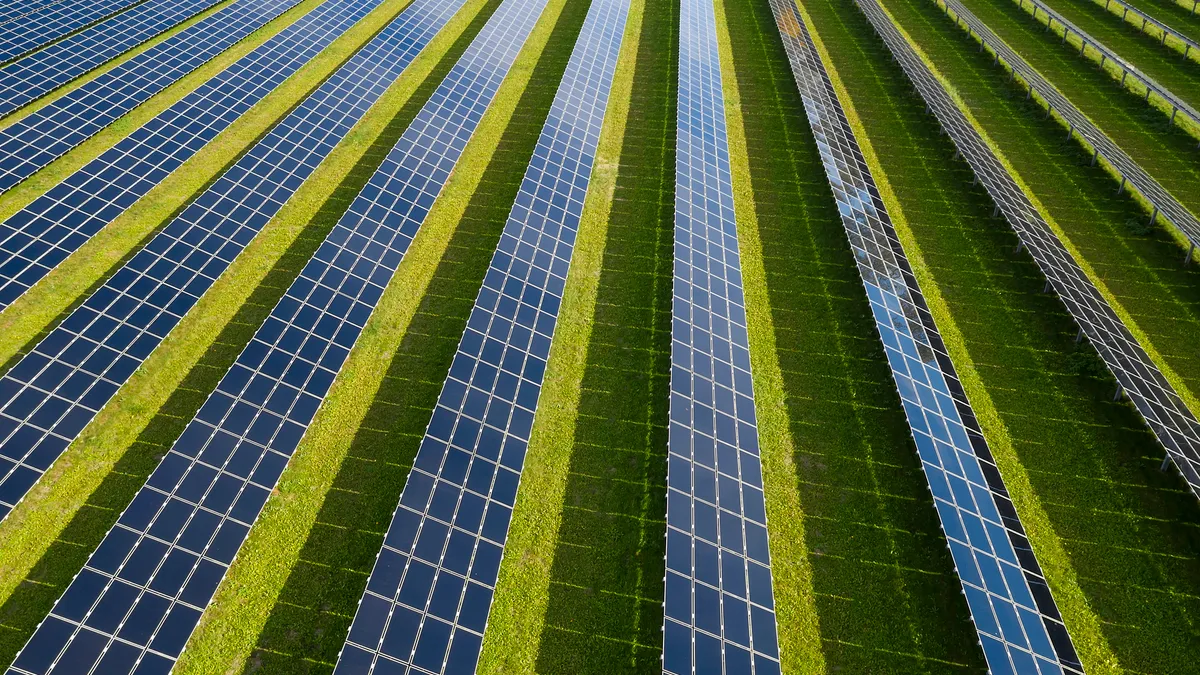As customers become more sophisticated, and satisfying them grows increasingly important to utilities, artificial intelligence (AI) is emerging as a way to increase engagement, though with a range of challenges, analysts told Utility Dive.
For example, smart thermostats use AI to learn customer behaviors over time and manage temperature settings.
"As we all know, space heating and cooling are the biggest end users in residential homes," Matt Braman, director of client analytics at energy efficiency consultant CLEAResult, told Utility Dive. "These types of smart thermostats are, I think, the best application of cost effective solutions for customers that can really start to unlock the potential of AI."
However, AI requires a lot of data, and the proliferation of behind-the-meter smart devices impact the utility's visibility of customers' needs.
AI and behind the meter
"Utilities are using AI data in a lot of different ways, on both sides of the meter," Braman said.
The large amounts of data from smart technologies can be leveraged through AI to optimize and inform a utility's customer engagement.
"The thermostat manufacturers, there's a lot we can learn from the detailed data that they're collecting," he said. But "they take the customer data protection very seriously."
He offered Google's Nest thermostat as an example where utilities have little visibility into the households that connect the technology into the grid.
AI could track changes in thermostat data to prompt energy efficiency improvements. For instance, the changes in outdoor and indoor temperatures and how long it takes to warm up a household could determine if a home needs better windows or weatherization measures, or if the furnace is short-cycling and needs to be replaced.
"There's so many other different vendors out there in the [Internet of Things] space that are sort of collecting this data and ... it's sort of like a dispersed ownership model."

Matt Braman
Director of Client Analytics, CLEAResult
Such data from vendors could be used "to help the customers understand and diagnose problems in their home without [utilities] having to send somebody out there ... like a remote audit component," Braman said.
When it comes to accessing behind the meter data, customers play key roles in consenting to the information that is collected and shared by vendors, according to Tyler Rogers, Energy Hub's sales executive.
Other third parties, like Energy Hub, can work between the developers of the smart technology and the utility to assist in monitoring assets. "We have about 30 utility clients that we're working with, the vast majority of that is bring your own device, bring your own thermostat," Rogers told Utility Dive.
"There's so many other different vendors out there in the [Internet of Things] space that are sort of collecting this data and ... it's sort of like a dispersed ownership model," Braman said.
Demand response at their fingertips
Utilities are using AI to unlock the large amounts of data coming from smart meters, applying the information to homes with traditional meters as well.
This summer, Rocky Mountain Power announced customers in its Idaho, Utah and Wyoming territory saved 41 GWh of energy through AI home energy reports. The program, from Bidgely, led to a nearly 25% cost reduction from the utility's previous home reports after being implemented last year.
Bidgely uses machine learning from over 50 billion smart meter data points to disaggregate the energy use of other monthly meters, offering customers insights without the installation of additional sensors, which are expensive.
However, programs backed by advanced technology to inform energy customers are still at risk of customers losing interest.
"There's a persistence issue," Braman said. "Someone might be really engaged in some of these smart home products initially. But then, in the case of home energy management systems, we've seen some of these things that certain people in the industry would [call] 'time-to-drawer,' how long until people kind of just put these things away and stop looking at them."
"While it might be nice to have an app on their phone, will people continue to use that over time?"

Matt Braman
Director of Client Analytics, CLEAResult
Many smart thermostat and smart energy systems boast new apps that can be accessed on phones and tablets to give customers a simple view of their home and energy use.
"While it might be nice to have an app on their phone, will people continue to use that over time?" Braman said. "A device like Nest takes some of that effort away from the customer and does the learning on its own ... based on the sensors and information it's able to collect."
CLEAResult has worked with utilities on smart thermostat pilots, including a program with Ameren Illinois that involved Nest and Amazon-backed Ecobee3 smart thermostats.
For Rocky Mountain Power, Bidgely did not report a change in customer behavior over the one-year period since the AI-enabled home energy reports were launched. The program had 330,000 customers and resulted in a 38% email open rate. That is more than twice the 2019 average for email campaigns across all industries, which ranged from 17% to 18.6%, according to Campaign Monitor.
AI in the marketplace
Online utility marketplaces help increase customer data and are platforms that also share offerings with customers. For instance, utilities could learn about the demographics of customers interested in distributed solar and storage, electric vehicle chargers and other upgrades to products that impact load and grid services. That data could be applied to target similar customers.
"All the energy marketplaces that you're seeing pop up everywhere right now ... that's a convenience measure," Jen Szaro, VP of the Smart Electric Power Alliance, told Utility Dive. "Uplight's driving a lot of that."
Uplight is a utility-branded online marketplace with more than 75 utility partners, which was acquired by Tendril this summer. The marketplace, combined with Tendril's home energy reports, helps residential customers choose products based on their behavior and existing energy use.
"Utilities have invested a ton of money to create these cool portals ... to talk to customers," Energy Hub's Rogers said. "And I think we see an opportunity to enrich that with the [smart and DER] devices that customers are also purchasing." Energy Hub partners with Oracle Opower and other providers.
"PSEG in New Jersey, they have the cleanest, meanest interconnection application process that I've seen across the country."

Jen Szaro
VP, SEPA
Online marketplaces and home energy reports are a way to personalize offerings on smart and distributed devices, but the fastest change in customer behavior is not based on the most advanced solutions, but by ease of access.
Szaro credited Public Service Enterprise Group (PSEG) for realizing a fast uptick in customer involvement through its program to increase transparency in the costs of adding distributed solar in New Jersey.
"PSEG in New Jersey, they have the cleanest, meanest interconnection application process that I've seen across the country," she said.
AI can help identify the likely solar adopters based on the demographics and energy use of similar customers that adopted solar, but the process to add resources can still be burdensome. PSEG simplified the process by spelling out fees and dates, and sharing a solar suitability map through the utility's website.
"To me, from an engagement standpoint of making projects move forward, it's top notch," Szaro said.
More AI programs and automation
AI is being used to save utilities money on customer interactions, as algorithms are perfected to optimize automated interactions on a range of matters from billing increases to service interruptions. Such applications can be deemed more mundane compared to the AI potential of using advanced metering infrastructure data, but they can save utilities money and address customer needs faster.
CLEAResult will be leveraging AI to predict the best time to email customers and to optimize how often to email customers to increase the rate of readership.
Data and case studies remain limited for many groups studying AI applications because they are newer in the utility space. AI programs "are still learning [or collecting information] and analyzing data, which can take 90 to 180 days to fully analyze and provide meaningful recommendations," according to CLEAResult.
CORRECTION: An earlier version of this article misdentified the CLEAResult client analytics director. His name is Matt Braman.



